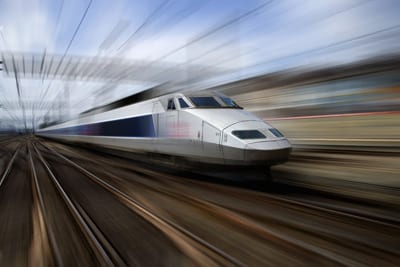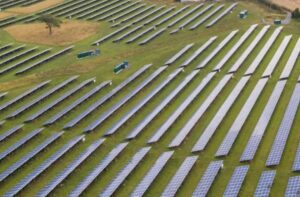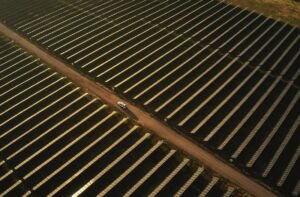A renewable energy powered high speed rail service linking the east-coast Australian cities of Melbourne, Sydney and Brisbane would cut the nation’s regional transport emissions by almost 30 per cent, while providing a profitable and popular service, a new report has found.
The report – a collaborative effort from climate change think tank Beyond Zero Emissions (BZE), the German Aerospace Centre (DLR) and the Uniiversity of Melbourne’s Energy Research Institute – explores the potential for high speed rail in Australia.
Two years in the making – and due for release next week – the report’s recommends the development of a high speed rail network along the lines of the recent government study; connecting 12 major regional towns, and the cities of Brisbane, the Gold Coast, Newcastle, Sydney, Canberra and Melbourne.
The report finds that such a project could take as little as 10 years, and would drive regional development and economic benefits, while reducing greenhouse gas emissions from transport.
“High speed rail runs on electricity, which means, unlike air travel, it can run on one hundred percent renewable energy. This is the prime motivation behind BZE’s recommendation of high speed rail”, said the report’s lead author, BZE’s Gerard Drew.
“For too long the discussion has been misled by concerns of low population density in Australia rendering HSR inappropriate for this country. The fact is much of Australia’s population is highly concentrated in the capital cities on the east coast and there is a high degree of travel between them by world standards.
“All this travel is increasingly dependent on imported fossil fuels adding to Australia’s carbon footprint, and unfortunately it is doubtful that emissions free air travel will ever eventuate,” Drew said.
“A high speed rail system on Australia’s east coast will reduce greenhouse gas emissions from regional travel in this busy corridor by almost 30%. On top of this high speed rail will continue to provide affordable, convenient and comfortable travel for Australians into the future without the uncertainty of fuel supply and price.”
The report predicts such a service would be an instant hit with Australians, with 60 per cent of them living within 50km of a proposed HSR station. It also suggests that ticketing revenue from the service could be used to cover the network’s operational costs and to repay construction costs.
The report’s launch follows the introduction of a private member’s bill in Federal Parliament to establish a development authority charged with the reservation of land and further preparations ahead of the detailed design and construction work of the high speed rail system.
It predicts that Australia’s transport emissions would be reduced by 150 million tonnes of carbon dioxide equivalent over 40 years of operation of a High Speed Rail service.








